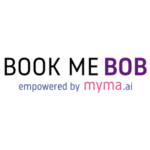
Team training and business growth shouldn’t be mutually exclusive. Recent studies have found that investing in your team can increase employee retention and overall profit margins. Your employees are as important as your customer base, and how they interact can grow (or shrink) your revenue. Training increases revenue for your business, but how, is deeper than just surface numbers as eHotelier’s Learning partner, Coassemble outlines.
Training your team enables rapid growth that’s scalable in terms of productivity and overall size. If you’re looking for growth opportunities, your team should be priority #1. The most effective way to increase your bottom line long-term is to ensure your team’s training is accessible and engaging.
How training increases revenue and business growth
Business growth that’s scalable is the focal point of how training increases revenue for a company. The most direct way to understand this is to review how a training process such as sales enablement leads to productivity, business growth, and increased profitability. So how does this process work?
For sales enablement, let’s say you have a new sales team member joining your team. This person has some previous experience before coming on, but are still fairly green compared to your team. Each member of your team is bringing in x number of conversions and hitting a target sales goal. That new employee, under traditional circumstances, could feasibly match the rest of their team in between one and three years. That’s because it will take repetition, trial and error, and a wealth of experience to attain the same skillset higher-performing members of the team already have.
What a training process like sales enablement does is take the knowledge of your top performers and transfers it in such a way that even new team members can close the gap. And they can do so in weeks instead of years. This is done through a variety of knowledge capture and training resources that make the best practices available to your whole team. How does this type of training affect the average team? Here are some statistics on how training can affect your business growth and revenue (both positively and negatively):
- Companies with highly engaged teams achieve a 21% increase in profitability.
- 69% of employees will reject a job offer if they find out that a company’s workers are generally unhappy (not great for new highers).
- It can cost as much as 20% of an employee’s salary to replace them (not to mention the chance of losing a team winner to a competitor).
- Without effective onboarding and enablement training, turnover can be as high as 50% for employees in the first 4 to 18months (and that’s another 20% to replace the replacement or new hire!).
- On average, more than 50% of sales teams believed training was effective to reach desired outcomes.
- 84% of employees in Best Performing Organizations are receiving the training needed to accomplish their goals.
We could keep going, but you’re probably starting to see the point with all of these—training is the most effective way to grow and enable your team’s (and company’s) success. Without training, your staff can feel unengaged and may weaken your productivity or even drop your retention rate. Let’s look at three training practices that can be implemented immediately to help you get results.
Training strategies for business growth
There are dozens of styles and methodologies behind the best training models for effective talent development. Three of them have been proven to ensure training increases revenue for your company:
- Onboarding—reduces the time to elevate a new employee to pro status
- Enablement—providing easily accessible training to ensure team success
- Continuous learning—knowledge offerings that foster employee and team growth
Each of these styles has a specific function that can increase employee engagement, retention, and productivity. And by offering all three, you’re guaranteed to see scalable business growth and an increase to your bottom line.
Training is also one of the most affordable ways a company can increase revenue as a small business and scale it with their business growth strategies. That’s because leveraging training tools provides accessibility to the inexperienced team members with talent development needs. By bridging this gap, online training platforms help growing teams gain the competitive advantage of a well-trained workforce.
1. Onboarding: pro status
Besides the interview, your onboarding is the first impression most new employees will get of your business. Companies and teams that stand out and foster long-term retention of their staff provide a welcoming and educational onboarding. Even if you hire a pro, they still will need help adjusting to your firm.
The reason most onboarding fails because it isn’t clear enough or doesn’t provide in the flow of work training. If a new team member doesn’t understand their function or has to wait weeks after training to apply that knowledge, then they most likely will lose interest. Not to mention that barely 12% of employees say their onboarding was effective.
But that also means you have a short gap to go from training zero to hero with your new hires. A great onboarding experience must include:
- An educational review of the company’s staff, history, goals, policies, and departments.
- Information on where and how to access information relating to a new hire’s role.
- Training material that allows them to learn in the flow of work (train on the job).
- Actionable follow-up items they can start working toward in the short and long term.
If you include all of this information, you’ll be able to rapidly onboard new team members in half the national time. And that means they’ll be able to contribute at a higher level sooner, scaling your onboarding process.
The last focus for your onboarding should be automation. By creating a “welcome” training pathway with your training tool, you can schedule it to be sent as soon as a new hire starts. This means all you’ll have to do is send role-specific training, and your platform will do the rest—Giving you more time to focus on the next two talent development strategies.
2. Enablement training
Enablement training is exactly what it sounds like—training that enables employees to work efficiently and effectively. Though sales enablement has gained the most traction in the past two years, any team can benefit from training that encourages growth. Enablement can also help employees interested in role progression (spoiler: most are if you offer it).
A great way to start enablement training is identifying gaps in knowledge or common points of friction your team encounters. By offering enablement training that helps your team overcome these challenges, they’ll be able to focus on growth. Developing new training to guide teams tackling a project they haven’t done previously is another great application of enablement training.
The most interesting aspect of enablement is social learning. If you look at any team, especially yours, we guarantee that enablement is already happening. Talent development strategies leverage this type of peer-to-peer training by empowering your team to access and transfer knowledge to succeed. How do enablement training and social learning connect? By providing your team with the best training tools to enable knowledge sharing, you can foster the most powerful of enablement processes.
3. Continuous learning
Firstly, we have continuous learning, which is something you want to be offering from the start to engage your team. This form of training yields business growth results in the long game by actively challenging your team and offering knowledge to them. Studies have shown that over half of all employees are not engaged. Continuous learning is an investment in your team that actively prevents them from feeling low engagement at work.
Continuous learning is often delivered as a hybrid of offering access to training resources and repetitive training throughout the year. For the former, this can be a knowledge up that is regularly updated with best practices and guides to bolster your team’s resources. For the latter, this can be scheduling regular training sessions that cover a mix of updated material and repeats. The more training your team has access to, the more likely they are to be engaged and stay with your team.
These are three proven methods that training increases revenue and business growth at scale for your company. For even more talent development strategies or unique cases to suit your team, chat with us today! Our experts can guide you to find the best solutions to effectively grow your business and your team.
About the eHotelier Academy:
Passionately providing self-paced professional development for current and aspiring leaders globally.
Business and career success requires continual learning, from the latest trends, insights, and news to online education from line staff to the executive level. Whether you have been to school or university, completed an MBA or landed in an industry unintentionally, to succeed and grow requires passion supported by learning.
The eHotelier Academy provides the structured framework to support yours and your team’s professional growth through online resources and professional development programs created in collaboration with industry leaders and curated by academics, customizable to your organization’s standards and requirements.
Contact the team today to grow your career, your team and your business.
Want to find out more?
Contact our team to discuss how we could help with learning in your organization.
































